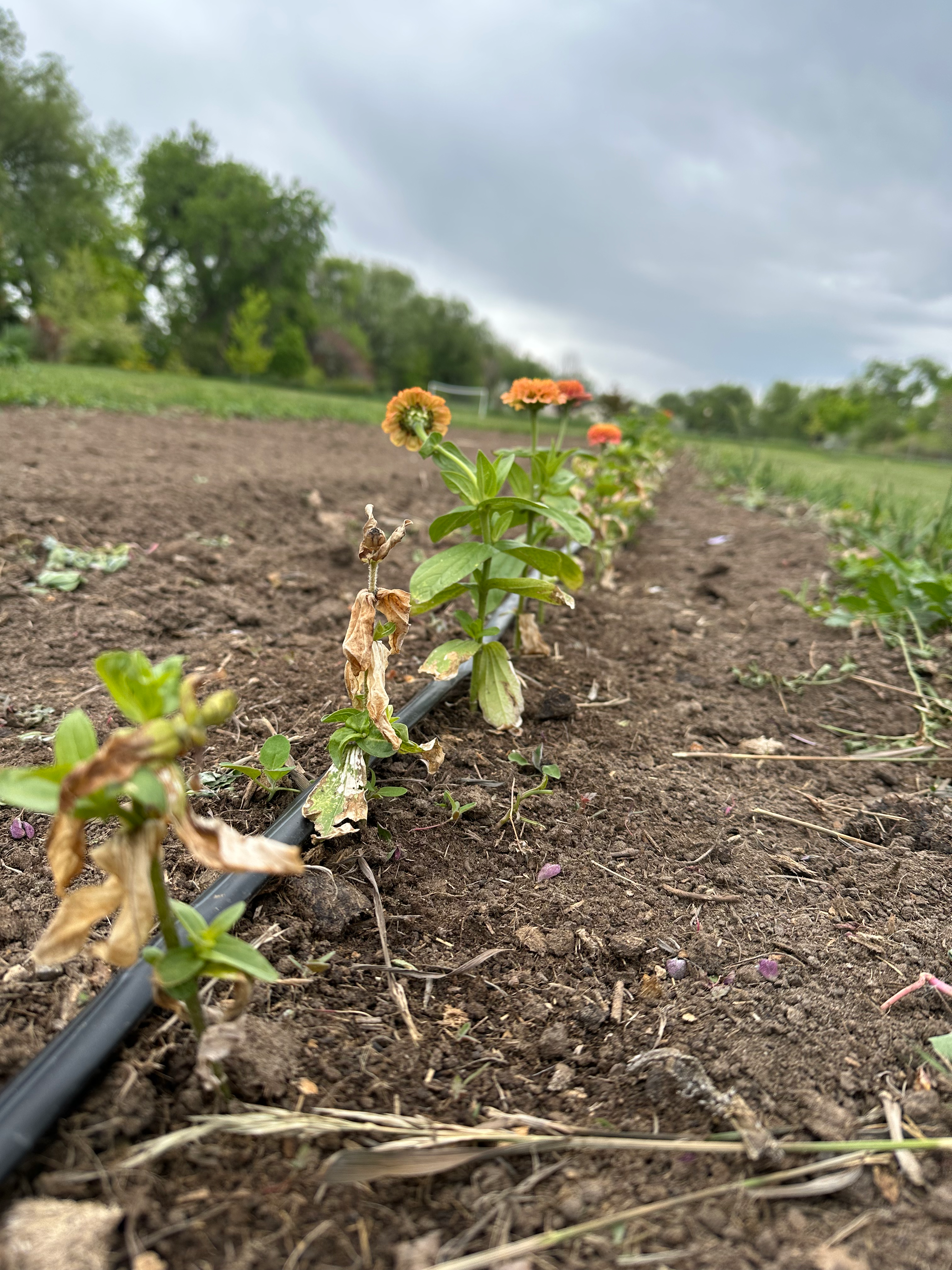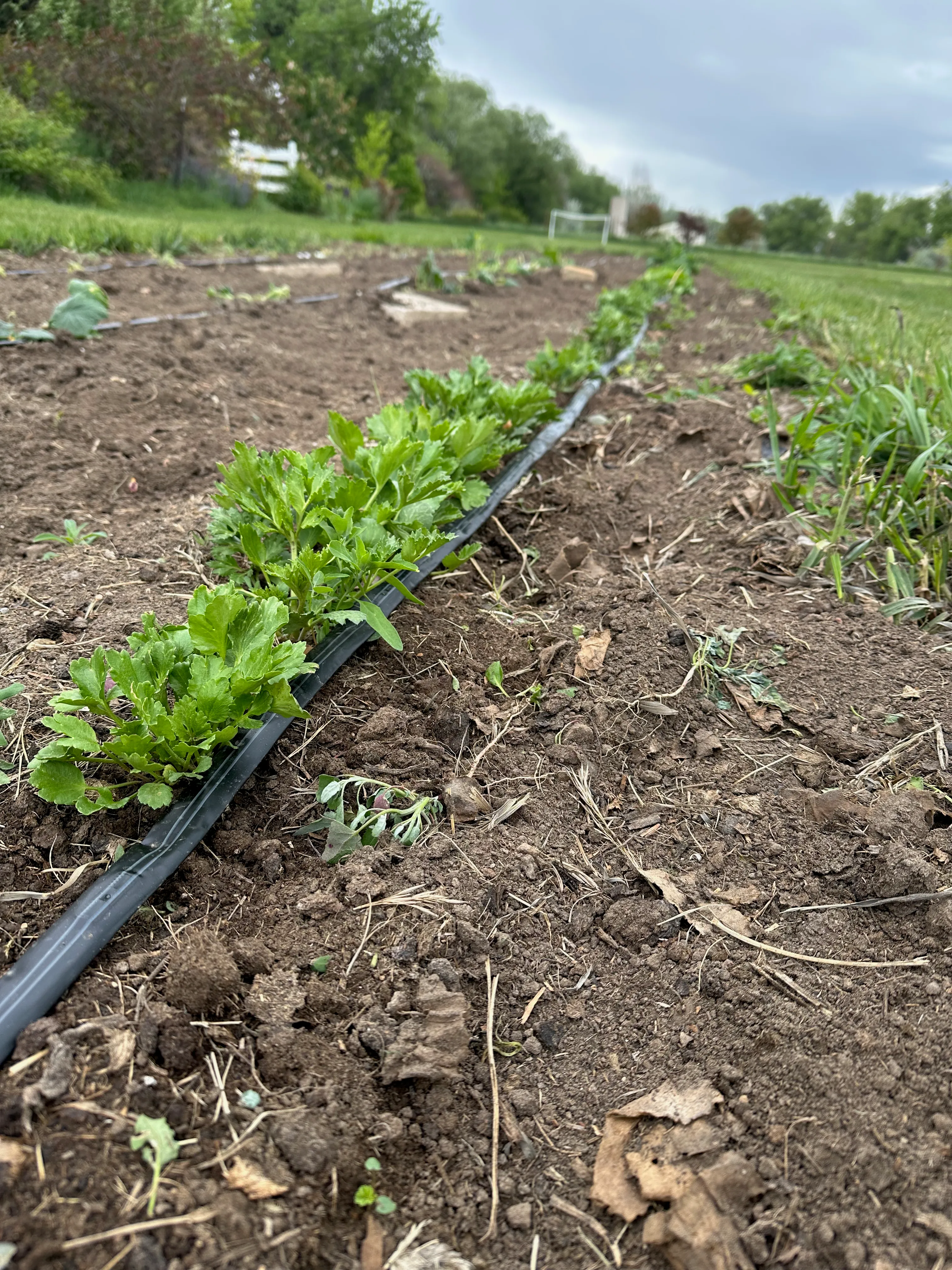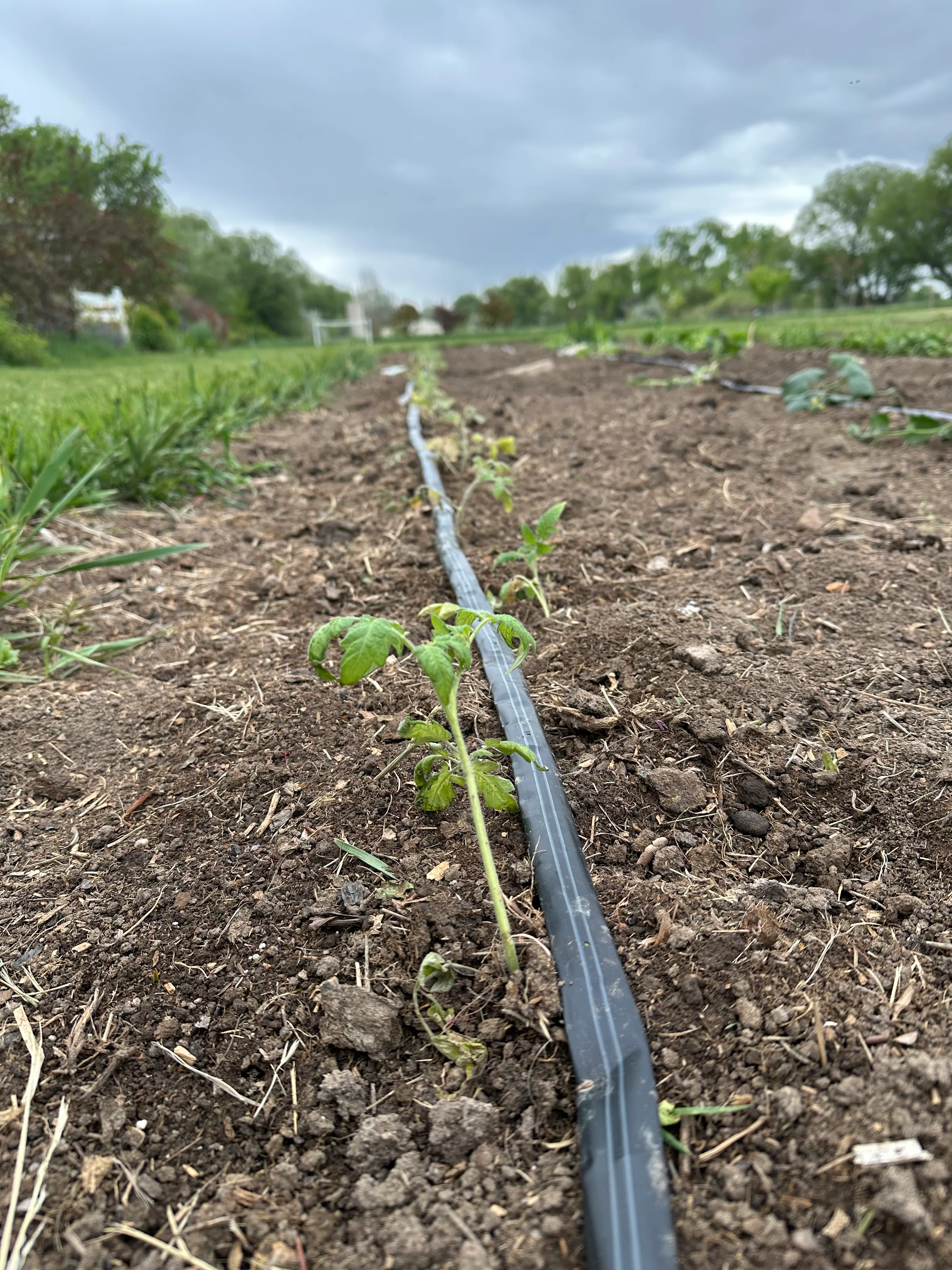· 4 min read
Spring Planting
Getting plants in the ground doesn't mean you've achieved success. Things like this take continual effort. Care. Nurturing.

Planting a Garden
Working in the garden can be incredibly rewarding, yet exhausting work. But as with anything worth doing, it rarely comes easy. Some years, things seem to fall into place; other times, life gets in the way, and the garden suffers. The truth is, a thriving garden is the result of months of pre-planning, hard work, and a bit of luck. Sometimes those efforts pay off beautifully; other times, they don’t—and that’s just part of it.
New Flowers
This year, we decided to experiment with a few new flower varieties: ranunculus, celosia, and feverfew. We started the seeds indoors under grow lights, and at first, things looked promising. The celosia, feverfew, and several flats of zinnias—our favorite annual—sprouted without issue. Watering was about the only task required to keep them happy.
But, as it often goes, life pulled us in different directions. Baseball games, homeschooling, battling depression, and trying to hold delicate relationships together—watering flowers somehow fell to the bottom of the list. Many of the seedlings didn’t survive the neglect.
In a last-ditch effort, I planted what remained a few weeks earlier than usual, encouraged by a promising weather forecast. But ten minutes of frost nearly wiped out the zinnias. An entire row—planted with hope—now sat slumped and blackened by the cold. Much like a suffering relationship, the flowers sat defiant in the dirt: thirsty, wilted, burnt by frost. But some—those resilient few—pushed forth a bloom in a final effort to continue living.
I thought they were all dead. The ranunculus corms I’d planted months earlier also seemed lifeless. I had followed the advice to plant them directly in dry soil, assuming they would pull moisture from the snowmelt. When no sprouts emerged, I couldn’t resist digging one up to see what was going on. The once plump corms were shriveled and dry. I was sure I had killed them.
But I watered them anyway. Weeks later, to my surprise, a row of small plants began to emerge—fragile but alive. They’re supposed to be blooming by now, I think. But we’ll see. Maybe there’s still hope.

Weeds
This time of year, everything comes alive—including the weeds. Freshly tilled garden beds, ready for new life, are also prime real estate for bindweed, our garden’s arch-nemesis. This wild morning glory relative can choke out just about anything if given the chance.
We refuse to use herbicides, so the battle is annual and relentless. The problem is the roots. Bindweed spreads by rhizomes—cut a root, and you don’t kill it; you just make more of it. We till, which only seems to multiply the problem. By the time our seedlings poke through the soil, bindweed is right there alongside them, competing for sunlight and soil.
If we can keep up with the weeding for a few more weeks, summer is usually more forgiving. But if we don’t? The garden will be overrun, and there’s no coming back from that.
Our Approach
We start each season by turning over the beds with the tiller, mixing in piles of manure from our cows and horses. It preps the soil for new life. By the time we’re ready to plant, the weeds are already staking their claim. That’s when we get to work hand-weeding, clearing out everything we can before laying drip lines and planting seeds or transplants.
The garden, in its early days, is both a promise and a prayer. There’s beauty in watching it grow, a reminder that life can thrive if given time and care. Like anything worth saving, the garden needs nurturing—attention, water, reassurance. Some plants don’t look like they’ll make it. I’m often tempted to pull them, to make room for something stronger. My wife always insists we give them a chance. “Put it in the ground,” she says, “and see what happens.” She’s usually right. A little water, a little attention—and they take off.

A New Garden
After a few back-breaking days, the seeds are in the soil, the plants are nestled in their rows, and the drip lines are in place. Already, I’m falling back into the rhythm of checking on them each morning—assessing their progress, looking for signs of life. It brings me peace. It pulls me out of the depths.
The Seasons of Resilience
Gardening is seasonal—so is life. Sometimes things blossom; other times, they wither. Sometimes you put something in the ground, and it grows beyond your expectations. Other times, you do everything right, and it still suffers. Sometimes the neglect takes time to turn around. Sometimes the damage is beyond repair. Sometimes you feel like giving up.
But you plant anyway.
Because sometimes, against all odds, things bloom.